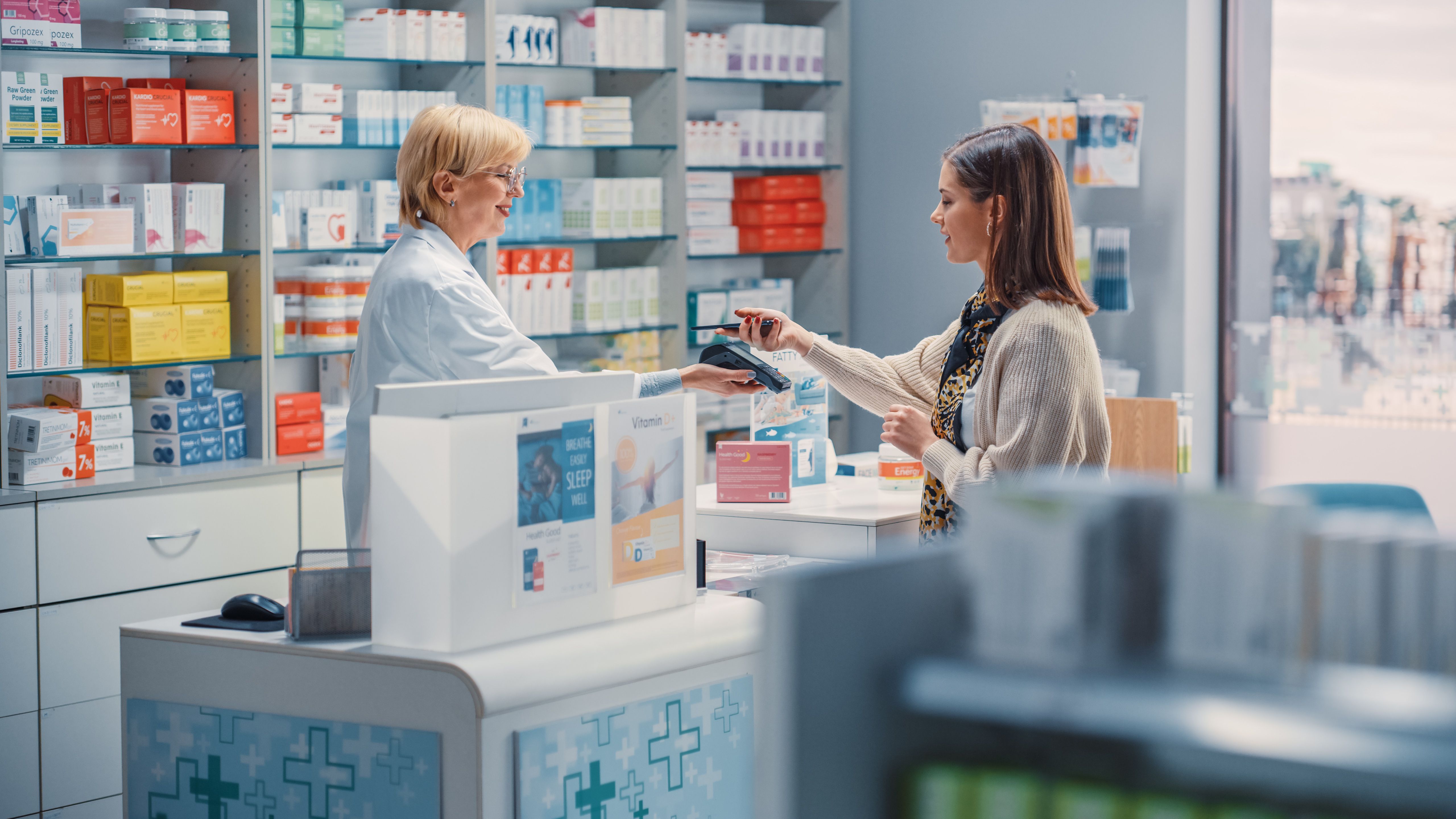On January 4, Eli Lilly and Company launched an “end-to-end digital health care experience” through its LillyDirect program,1 with a direct manufacturer-toconsumer mail order pharmacy, a website with disease state information, and a referral network of in-person and virtual prescribers. The pharmacy, Lilly Direct Pharmacy Solutions, outsources fulfillment to companies such as Eversana and Truepill,2 the latter also servicing Mark Cuban Cost Plus Drug Company.
BYPASSSING THE SUPPLY CHAIN AND BROEKN REIMBURSEMENT MODEL
Cost Plus is working with biosimilar manufacturers to bring more affordable specialty products to its in-house and in-neighborhood pharmacy networks,3 effectively cutting out wholesalers, group purchasing organizations (GPOs), and ultimately pharmacy benefit managers (PBMs). That makes sense; why play the rebate game if the patient is paying for the product without using insurance—which for tens of millions of Americans on high-deductible plans makes out-of-pocket costs greater than they would be if they paid cash. This reality has engendered discount cards, the most prominent being GoodRx.
About the Author
Troy Trygstad, PharmD, PhD, MBA, is the executive director of CPESN USA, a clinically integrated network of more than 3500 participating pharmacies. He received his PharmD and MBA degrees from Drake University and a PhD in pharmaceutical outcomes and policy from the University of North Carolina. He recently served on the board of directors for the Pharmacy Quality Alliance and the American Pharmacists Association Foundation.
Brand manufacturers (well, at least one for now) are responding by going directly to patients, combining 3 essential games into 1: the rebate game, to implement price discrimination by ability to pay; the patient assistance program game, also to implement price discrimination by ability to pay; and the cash pay game, for those who can afford medications. This effectively creates the ultimate narrow network of providers, which the manufacturers own to wrest back control from an out-of-whack supply chain and reimbursement system—both of which are coming under increasing federal anticompetition scrutiny—that will now include wholesalers and GPOs in addition to PBMs.4
Community-based cash-only pharmacies such as Blueberry Pharmacy5 are growing in number in parallel to direct primary care (which also does not take insurance) with a focus on generics, making up more than 93% of all fills and services. Importantly, pharmacies such as these have little need for wholesaler fidelity and no need to contract with PBMs.
BRAND MANUFACTURERS ARE NO LONGER SITTING IDLE
A September 2023 publication by the American Enterprise Institute (AEI) provided estimates of list to net costs for diabetes and obesity treatments. The publication reported a percentage of discounts among 4 glucagon-like peptide (GLP)-1 products as a proportion of the list price provided by rebates and concessions, ranging from 48% to 79%.6 This means the manufacturer is retaining roughly half the list price in the best scenario and as little as one-fifth in the worst. Holy cow! What will it look like when there are 10 indications and 10 market entrants (both likely scenarios) over the next few years? It stands to reason why a brand manufacturer would take action to start to minimize the bleeding.
WHO WINS AND WHO LOSES WHEN REBATES EXCEED MANUFACTURER REVENUE?
In the same analysis, the AEI authors purport that tirzepatide (Mounjaro) has an estimated monthly net price of just over $200.6 This raises 2 questions: 1) Why not just go to market as a transparent cash-only option and forgo participating in the Medicaid Drug Rebate Program or contracting with any PBMs, seeing millions of Americans would gladly pay $200 a month out of pocket for the product? And 2) Where on earth do all those rebate dollars go?
On his blog Drug Channels, Adam J. Fein, PhD, analyzed IQVIA data and determined the total list to net amount (that is, the total amount of rebates and concessions provided by manufacturers, including the one-fifth he attributes to the 340B program) to be $253 billion in 2022. Estimated growth is an average of 8% per year, according to Fein, with the postrebate price of brands falling for the last 6 years, on average. In the meantime, the list price has increased over the same time.7
BUSTING THE STATUS QUO IN MEDICATION DISTRIBUTION AND PAYMENTS
With a total market nearing $100 billion, the GLP-1s will, over time, break every revenue record in the drug manufacturing history books. With never-before accomplished labels likely for elusive conditions such as weight loss, substance abuse disorder, and some behavioral health conditions, the good news for patients keeps coming in the clinical trial data. But with so many market entrants, following the traditional flow of contracting with wholesalers, PBMs, GPOs, and other industry “middleware” will be highly unlikely. Direct-to-consumer plays, cash-only pharmacy plays, government price controls, and the purchase of licensing instead of end product will all be in play.
We already have a consignment-like model in which a 340B entity owns the inventory; how long until the manufacturer owns and keeps the inventory virtually rather than engaging in an endless stream of buying and selling before it finally gets to the patient?
AS USUAL, COMMUNITY PHARMACY IS THE VICTIMIZED BYSTANDER
It seems that every actor in the pharmacy world is making money hand over fist except for the community pharmacy. Even Tim Wentworth, the new CEO of Walgreens Boots Alliance, Inc, said the quiet part out loud in his first investor call as CEO, on (with perfect timing) the same day LillyDirect was launched.
“The need to cross-subsidize and force, essentially, the profit onto the generic side in exchange for a subsidy on the brand, particularly with the new brands that are coming out, just doesn’t work anymore for the pharmacies or, frankly, for the patients in high-deductible plans. So I think those powers will align to force…a set of changes around reimbursement that may well stick,” Wentworth said on the call.7
In other words, we can’t keep losing money on brand prescriptions and expect the generic prescriptions to fill up the slack plus a sustainable margin.
The next few years are going to be interesting for sure.
REFERENCES
Lilly launches end-to-end digital healthcare experience through LillyDirect. News release. Eli Lilly and Company. January 4, 2024. Accessed February 20, 2024. https://investor.lilly.com/news-releases/news-release-details/lilly-launches-end-end-digital-healthcare-experience-through
Have questions? We have answers! Accessed February 20, 2024. https://lillydirect.lilly.com/faq
Cohen J. Mark Cuban’s Cost Plus Drugs sparks others to change how Rx meds are priced. Forbes. January 2, 2024. Accessed February 20, 2024. https://www.forbes.com/sites/joshuacohen/2024/01/02/mark-cubanscost-plus-drug-company-sparks-moves-to-change-how-rx-drugs-arepriced/?sh=57f7c3232071
FDA, HHS Seek Public Comment on Generic Drug Shortages and Competition Amongst Powerful Middlemen. News release. Federal Trade Commission. February 14, 2024. Accessed February 28, 2024. https://www.ftc.gov/news-events/news/press-releases/2024/02/ftc-hhs-seek-public-comment-generic-drug-shortages-competition-amongst-powerful-middlemen
Blueberry Pharmacy. Accessed February 20, 2024. https://blueberrypharmacy.com/
ppolito BN, Levy JF. Estimating the cost of new treatments for diabetes and obesity. American Enterprise Institute. September 2023. Accessed February 20, 2024. https://www.aei.org/wp-content/uploads/2023/09/Estimating-the-Cost-of-New-Treatments-for-Diabetes-and-Obesity.pdf?x91208
Fein AJ. Four trends that will pop the $250 billion gross-to-net bubble—and transform PBMs, market access, and benefit design. Drug Channels blog. April 4, 2023. Accessed February 20, 2024. https://www.drugchannels.net/2023/04/four-trends-that-will-pop-250-billion.html
Walgreens Boots Alliance (WBA) Q1 2024 earnings call transcript. The Motley Fool. January 16, 2024. Accessed February 20, 2024. https://www.fool.com/earnings/call-transcripts/2024/01/16/walgreens-boots-alliancewba-q1-2024-earnings-call/







